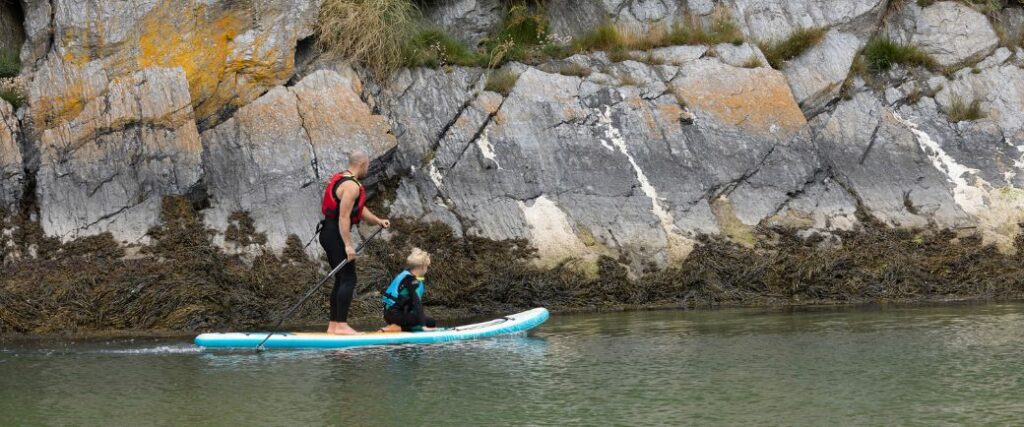Paddleboard Safety: Essential Tips for Staying Safe on the Water

Paddle boarding is a fantastic water sport that offers a unique and thrilling way to explore lakes, rivers, and oceans. However, like any water activity, it's essential to prioritize safety to ensure a fun and incident-free experience. Check out our essential tips and guidelines to enhance your paddleboard safety and make the most of your time on the water.
Be Safe
Wear a Personal Flotation Device or Buoyancy Aid:
Always wear a properly fitting personal flotation device (PFD) or buoyancy aid when paddle boarding. Even if you're a strong swimmer, unexpected situations can arise, such as changing weather conditions, fatigue or cold water shock can inhibit your ability to swim or stay afloat. Wearing a PFD significantly increases your safety and gives you peace of mind when out on the water.
Use the Correct Leash: Attach a leash to your ankle, calf or waist and secure it to the paddleboard. A leash will keep the board within reach if you fall off and prevent it from drifting away, especially in windy conditions or strong currents. Choose a leash appropriate for your paddle boarding environment, such as coiled leashes for flat water or straight leashes for surf.
Quick Release Belt System: For use on any moving or flowing water where there is a risk of snag or entrapment.
Calf Leash: For use on lakes/canals/sea/coastal bays/surf where there is NO risk of snag or entrapment.
Ankle Leash: For use on lakes/canals/sea/coastal bays/surf where there is NO risk of snag or entrapment.
Be Mindful of Other Water Users: Respect other water users, including swimmers, boaters, and fellow paddleboarders. Maintain a safe distance from them, especially in crowded areas. Be aware of your surroundings, and always yield to larger vessels or faster-moving watercraft.
Learn Proper Paddleboard Techniques: Before heading out, familiarize yourself with the correct paddle boarding techniques. Take lessons or watch instructional videos to learn the proper stance, paddling techniques, and how to maintain balance. Learning these basics will improve your stability and reduce the risk of accidents.
Know your limits and paddle within your skill level. If you're a beginner, stick to calm and shallow waters until you gain more experience and confidence. Gradually progress to more challenging conditions as you improve your skills and become comfortable handling different situations.

Be Prepared
Be Prepared with The Right Equipment & Clothing: Carry essential safety equipment, such as a whistle or signalling device, a waterproof phone case, and a first aid kit. These items can prove invaluable in emergency situations and allow you to call for help or provide basic medical assistance if needed. Check the weather conditions and consider your clothing choice. Dress appropriately for the weather and location that you’re headed to.
Check Weather and Water Conditions: Always check the weather forecast and water conditions before you go paddleboarding. Avoid paddling in strong winds, thunderstorms, or rough waters that can make it difficult to control your board. Be aware of local regulations and advisories that may affect your safety.
Let Someone Know Your Plans: Inform a friend or family member about your paddle boarding plans, including your intended route, estimated duration, and when you expect to return. If something goes wrong, they will have important information that can help locate you quickly. Always carry a means of communication with you when out on the water.
By following these essential paddleboard safety tips, you can ensure a safe and enjoyable experience on the water. Remember to prioritize safety, be mindful of your surroundings, and always stay prepared for any situation. With proper precautions and a focus on safety, paddle boarding can be a rewarding and thrilling adventure for everyone.
Thinking about heading out on the water? Whether you're a beginner looking to start their journey, or a seasoned SUP goer, we've got something to suit all abilities. Check out our range of Hydroforce SUPS today.

